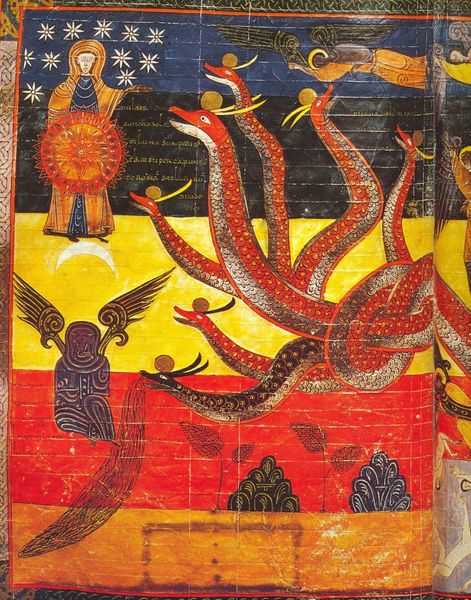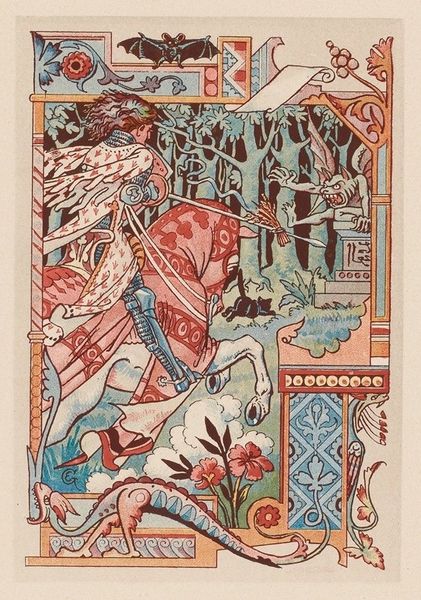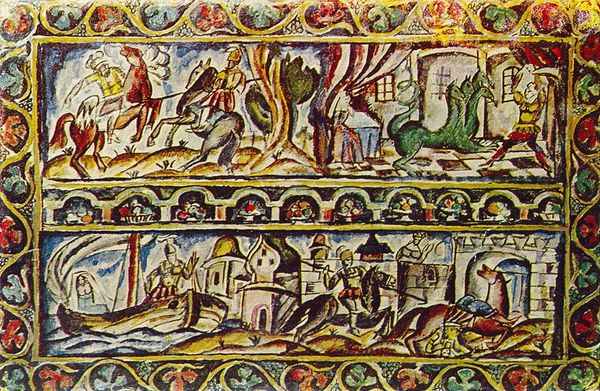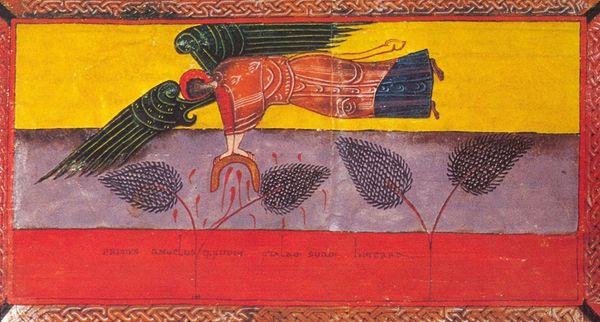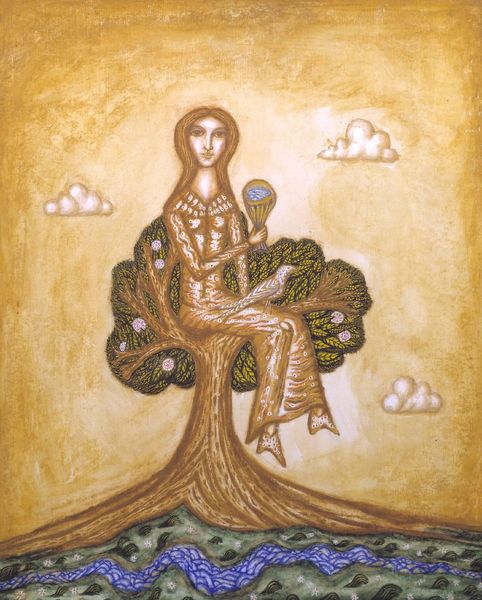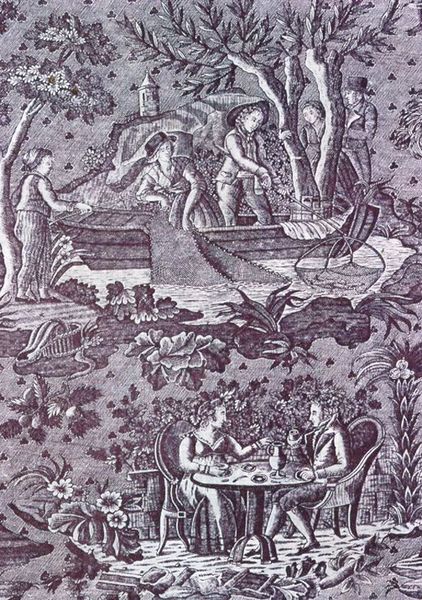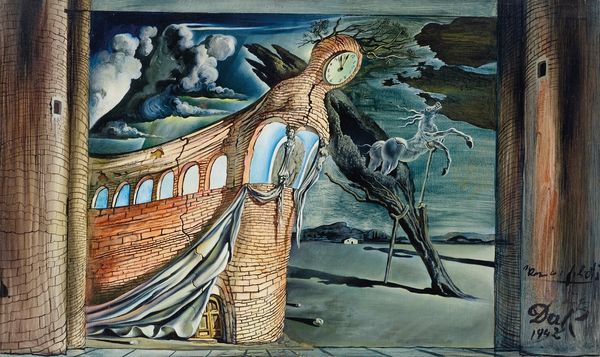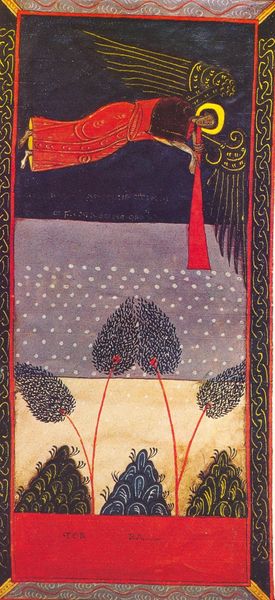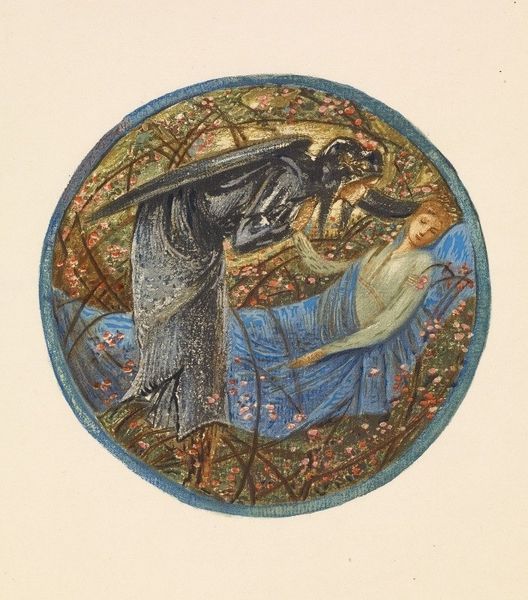
Dimensions: support: 298 x 400 mm frame: 435 x 534 x 70 mm
Copyright: © Tate | CC-BY-NC-ND 4.0 DEED, Photo: Tate
Editor: Here we have Cecil Collins' "The Sleeping Fool," its date is unknown. It's a dreamy oil painting, and I'm struck by its stillness. What do you see in this piece? Curator: The fool, a recurring figure in Collins' work, isn't simply a jester. Notice how he sleeps beneath the blossoming tree, a potent symbol of rebirth and innocence. The seated figure, too, embodies a contemplative spirit. Does it evoke any familiar narratives for you? Editor: It reminds me a bit of Arthurian legends, perhaps a slumbering knight. Curator: Perhaps! The fool, the maiden, the symbolic landscape – these archetypes resonate deeply with our collective unconscious. It’s a dreamscape brimming with ancient echoes. Editor: That's fascinating. I'll certainly look at Collins' work differently now. Curator: Indeed, images invite us to delve into our shared history, revealing timeless truths.
Comments
tate 8 months ago
⋮
http://www.tate.org.uk/art/artworks/collins-the-sleeping-fool-n06036
Join the conversation
Join millions of artists and users on Artera today and experience the ultimate creative platform.
tate 8 months ago
⋮
Collins used the character of 'The Fool' as an actor in many of his paintings. For him the Fool represented a state of innocence and spiritual purity. In an essay entitled 'The Vision of the Fool' Collins explained that he saw the qualities of the Fool as essential to creativity and inspiration: 'The saint, the artist, and the poet are all one in the Fool, in him they live, in him the poetic imagination of life lives.' In this painting the Fool and his muse are depicted with their eyes closed in reverie, surrounded by flowers. Gallery label, September 2004
